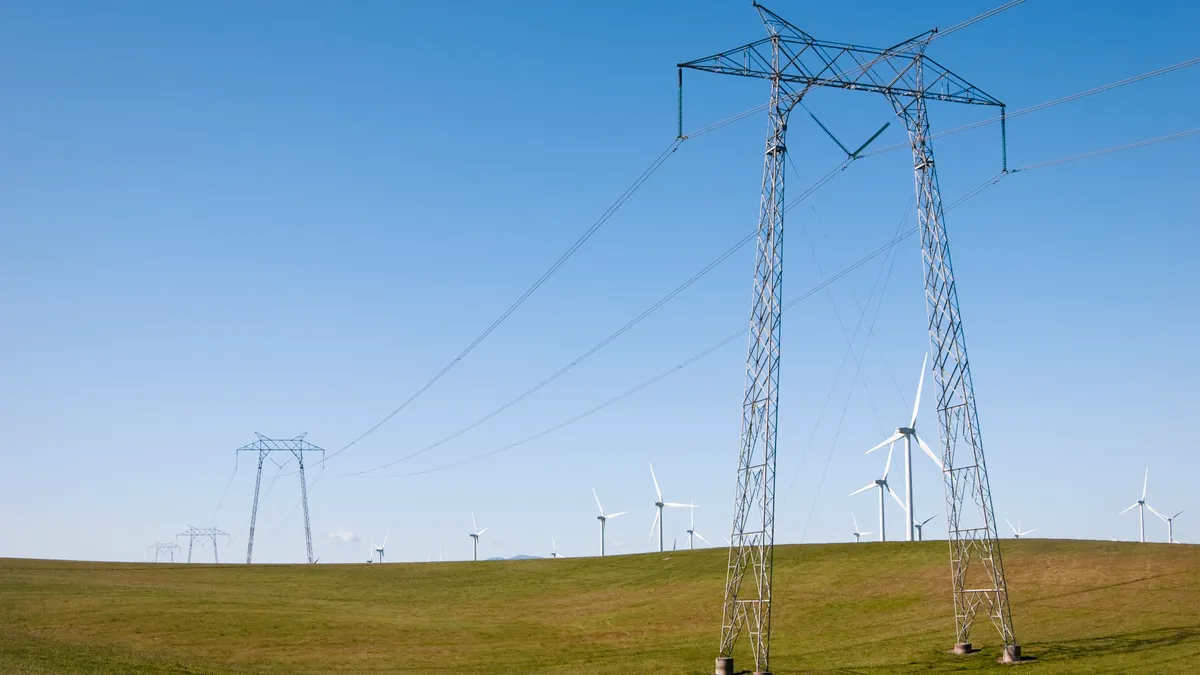Mona Tierney-Lloyd is head of state policy and regulatory affairs, Central and West region, for Enel North America, Jack Wadleigh is regulatory and market affairs manager, Western region, for EDP Renewables North America.
It’s hot outside, with no signs of cooling off. In the past week, the West has experienced a tropical storm and record heat — threatening multiple states with energy blackouts. This extreme weather continues to demonstrate the urgency for shoring up our energy systems across the region. The only way to reliably keep the lights on is if states across the region can work together to strengthen the energy grid. The good news is that collaboration across states is proven to work and there is a swell of momentum moving in the right direction.
That momentum will only grow stronger and more visible this week as the Extended Day-Ahead Market forum brings together energy leaders from across the West in Las Vegas. As energy industry leaders and advocates in the West, we’re excited about this forum for a particular reason: For the first time, a California Independent System Operator event is happening outside of California and in-person. The co-hosts include CAISO, NV Energy, Pacificorp, Balancing Authority of Northern California and Southern California Edison — a strong signal that these leaders understand both the urgency and the benefits of working together.
The Extended Day-Ahead Market, or EDAM, is a voluntary day-ahead electricity market designed to increase regional coordination, support states’ energy policy goals, and meet demand cost-effectively. It was built on the success of the Western Energy Imbalance Market, or WEIM, a real-time energy market which launched in 2014 and has already delivered over $4 billion in savings to participants. WEIM saves money because different areas can transfer energy in 5 and 15 minute intervals throughout the day to buy and sell lower-cost electricity near the time when it’s needed. The goal of EDAM is to leverage even greater economic benefits through even stronger collaboration — participants will commit to share resources a day in advance so that the most efficient and cleanest energy sources can be optimized at the right times.
Increased collaboration means increased savings: According to an EDAM Benefit Study conducted in 2022, EDAM would bring an annual operational savings to the West of up to $543 million per year from reduced power production expenses. A West-wide EDAM would also reduce carbon dioxide emissions by 1.5% a year, equal to removing more than 634,000 vehicles from the road.
This is clearly the direction the West needs to keep moving in — working together for a cleaner, more affordable, more reliable grid. Establishing EDAM is a significant milestone, but it can’t be the end. We need to stay on this path and get to a true regional grid, a Western Regional Transmission Organization, or RTO, to achieve maximum benefits.
Think about it this way: If you run a business, and you need to procure equipment, the more time you have to plan, the better deal you’ll get. Anything will be better than waiting until the moment you have to have it and are forced to buy at the first store you walk into. But if you can plan out all your supplies for the year in coordination with the other businesses in your building and place a large bulk order, you’re going to get the best deal of all.
It sounds simple, but it’s not that different from utilities working to meet energy demand in the West: Planning ahead 15 minutes out saves money; Planning a day ahead saves even more money. Planning long-term and building transmission lines together saves the most money. A regional grid with the biggest geographic footprint, ideally including all 11 states in the West, creates more opportunity for efficiency gains and cost savings.
Earlier this summer, a letter from Western energy regulators signaled their support for a plan that would bring states together to collaborate on electricity through a Western RTO. In addition to ratepayer savings and increased reliability, establishing a Western RTO would also bring significant job growth for several states. An RTO would spur job creation in both the energy sector and beyond. According to a report by Energy Strategies, the economic impact of all 11 states joining a Western RTO would bring up to 657,000 new permanent, high-paying jobs to the West by 2030, and save Western households more than $1.4 billion per year from lower electricity costs.
WEIM and EDAM prove collaboration across states works. Now, we have the opportunity to deliver even more reliable, affordable, cleaner energy to families and businesses by going beyond planning a few minutes ahead — or a day ahead — to planning our grid together. A Western RTO is how we deliver that.






















